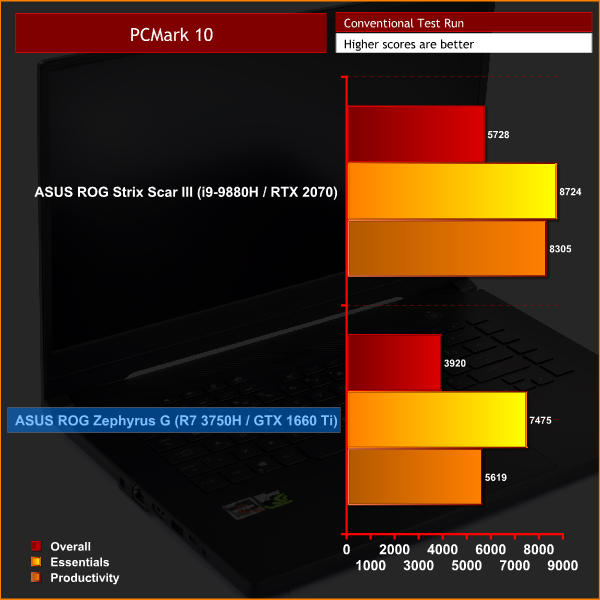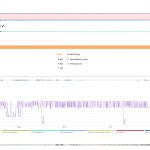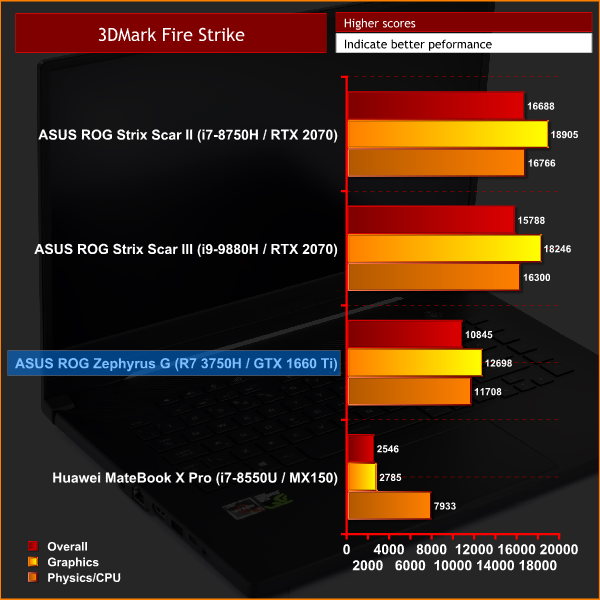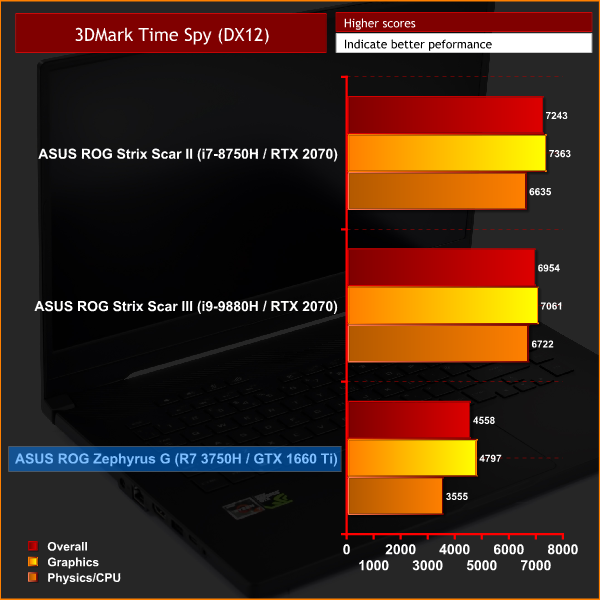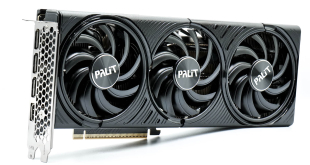Performance testing was conducted using ASUS’ ‘Balanced’ mode in the Armoury Crate software suite.
PCMark 10
PCMark 10 is the latest version in the PCMark series of industry standard PC benchmarks. Updated for Windows 10 with new and improved tests, PCMark 10 is also faster and easier to use.
PCMark 10 is another new addition to our roster, so we only have the £2800 Strix Scar III to compare with – but even so, it performs well, especially in the Essentials benchmark, indicating a good level of performance for executing office tasks and web browsing with the machine, which ties into its portable nature as you may want to use it for gaming at home, but also take it to work or university for general use.
3DMark
3DMark is a multi-platform hardware benchmark designed to test varying resolutions and detail levels of 3D gaming performance. We run the Windows platform test and in particular the Fire Strike and Time Spy benchmarks, which are indicative of high-end 1080p and 1440p PC gaming.
The Zephyrus G posts healthy benchmark scores in both the Fire Strike (1080p DX11) and Time Spy (1440p DX12) benchmarks. Looking first at the graphics score from Fire Strike, the machine posted a result of 12698. Compared to a desktop GTX 1660 Ti – like this Gigabyte OC 6G model – this is around 3400 fewer points, though we have to remember this is both a Max-Q chip and it is paired with a mobile processor. Even so, it's still a decent score considering both those limitations.
Physics scores are also decent from the Ryzen 7 3750H. Intel's 6 and 8-core chips – the i7-8750H and newer i9-9880H – obviously out-perform it by some margin, but if we check back against the older i7-7700HQ processor, that chip would typically score 1000 points less for the Fire Strike physics tests, so as quad-core processors go, the 3750H is well up to the task.
 KitGuru KitGuru.net – Tech News | Hardware News | Hardware Reviews | IOS | Mobile | Gaming | Graphics Cards
KitGuru KitGuru.net – Tech News | Hardware News | Hardware Reviews | IOS | Mobile | Gaming | Graphics Cards


